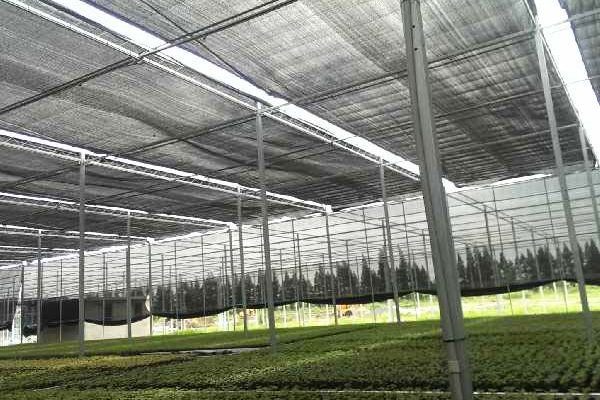For many farming companies and large-scale growers, extreme heat is becoming a real headache. How can crops be protected and yields kept steady? That’s the big question. Shade net houses might look simple, but they’re actually one of the most cost-effective ways to control heat and block harsh sunlight. In hot, dry regions—especially when the budget is tight—choosing the right type of shade structure can make a huge difference. According to reports, the first shade net houses came from India. They helped boost yields by five to seven times, sometimes even more.
At INSONSHADE, we’ve been focused on agricultural shade solutions for years. In this article, we’ll walk you through the main types of shade net houses. Our goal? Help you choose the best one for your growing conditions—so you save time, avoid mistakes, and grow smarter.
What Is a Shade Net House? What Makes It Special?
Think of a shade net house as a giant umbrella for your crops. Its main job is blocking harsh sunlight and UV rays so plants don’t get scorched. The structure is pretty simple—you can set up a frame using metal pipes or bamboo, then cover it with shade netting.
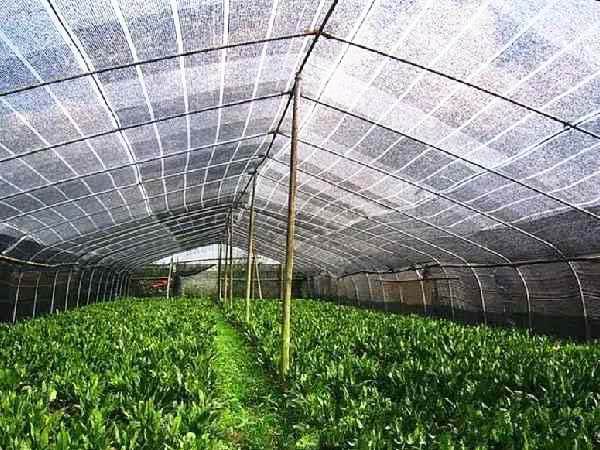
A-frame shade net house
That netting is the star of the show. It’s not just some regular fabric—it filters out excess sunlight and reduces heat stress. Because it’s mesh, it also allows great airflow inside the house. That’s not all. Shade nets can also block wind and rain and, in some cases, even keep some insects out. So, you get multiple benefits in one setup.
Shade nets come with different “shade percentages.” Some block just 15% of sunlight, while others can block up to 90%. Which one should you pick? It depends on what you’re growing and the season because different crops and climates have very different light needs.
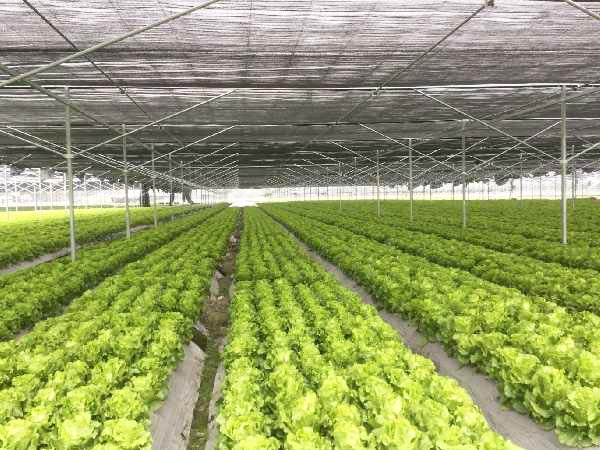
Lettuce growing under a shade net house
We usually recommend HDPE shade nets with UV stabilizers. They’re UV-resistant, durable, and can last for years without much fuss. In the long run, they save you time and money compared to regular materials. Shade net houses are super versatile, too. It’s not just for vegetables. Flowers, herbs, and spices—all those light- and temperature-sensitive crops—do really well under this kind of structure.
2 Common Types of Shade Net House
Shade net houses may look simple, but building a strong and durable one takes some skill. The two most common designs are the flat type and the dome type. Each has its pros and cons when it comes to wind resistance, setup cost, and practical use. If you’re running a farm or an agri-business, it’s worth understanding these differences before you choose.
1. Flat Type Shade Net House
Flat-type shade net houses look a bit like stretched-out rain shelters. The top is flat, covered with shade netting, and the frame underneath is made from metal pipes or other durable materials. This design is super straightforward. It’s easy to build and just as easy to take down, which makes it ideal for covering large areas quickly.

Temporary shade net structure for nursery plants
Most people use galvanized iron (G.I.) pipes for the frame—they’re lightweight and sturdy. The net is usually made from UV-treated polyethylene. It blocks strong sunlight but still lets some light through, giving plants protection without full darkness.
The biggest advantages?
It’s cheap, practical, and gets the job done. It helps lower the temperature inside, reducing the stress of summer heat on crops. At the same time, the net helps balance the greenhouse’s thermal environment. It keeps the temperature more stable at night, while also blocking wind, birds, and even some pests. One net, many uses.
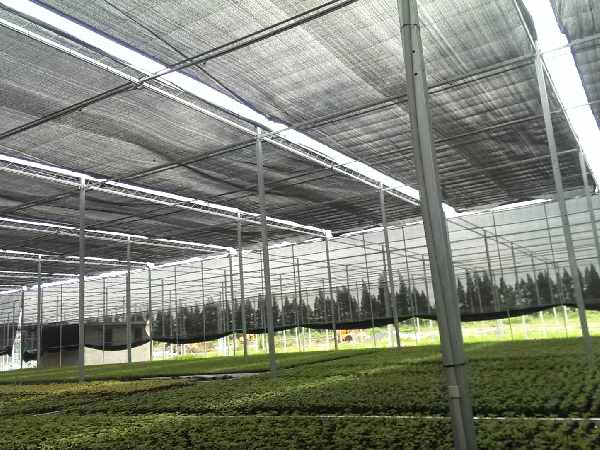
Flat Type Shade Net House
That’s why farmers love it—especially in dry regions with less wind. It’s more stable and cost-effective in those conditions.
Now, the downside.
Because of its flat top, this type doesn’t handle strong winds very well. If you live in an area with heavy wind or frequent storms, this structure might not be the best option. The risk of damage goes up, so it’s important to match the design to your local climate.
That said, the flat type is very versatile. It works great for vegetables, fruits, flowers, or seedling nurseries. Crops like cucumbers, tomatoes, and chili peppers—which are sensitive to weather—benefit a lot when grown in these structures, especially off-season. It’s also a smart pick for temporary shading setups. It’s super flexible and easy to move.
2. Dome-Shaped Shade Net House
As the name suggests, a dome-shaped shade net house has a curved roof—kind of like an open umbrella. It’s a smarter design than the flat type, especially when dealing with strong winds and heavy rain – The curved top helps rainwater slide off quickly, so there’s less chance of water pooling. When strong winds come, the dome shape helps the wind flow over the structure smoothly instead of hitting it head-on, giving it better wind resistance and overall stability.
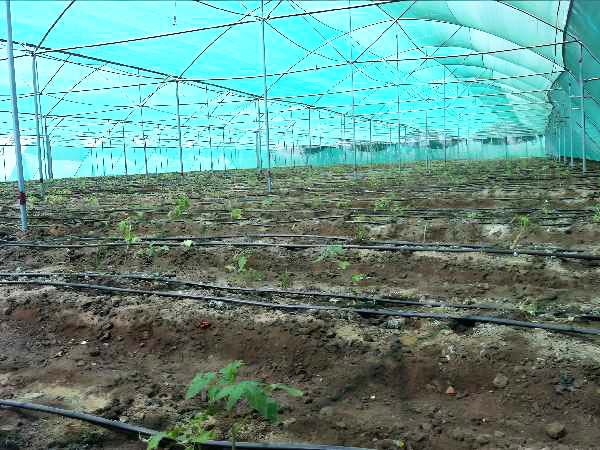
Dome-Shaped Shade Net House
The frame is usually made from steel pipes or galvanized steel. It’s either welded or bolted together, then fixed to the ground using anchors or a concrete base. That setup makes it solid, rust-resistant, and built to last. Maintenance is minimal, and installation is surprisingly easy.
Because of its stable and weather-resistant design, many farmers take it a step further and build high tunnel-style dome structures. These offer more space and better airflow. They’re widely used in commercial farming, especially where machines are involved or large-scale planting is needed.
Of course, there’s a trade-off.
The cost of the dome-shaped type is a bit higher than the flat type—both in materials and labor. But if you’re in a windy, rainy region or growing high-value crops, it’s well worth the investment. Crop safety and stable yields are what really matter, right?
Dome-shaped shade net houses are great for long-term growing projects. Think tropical vegetables like chili peppers or tomatoes. They’re also ideal for nurseries, flowers like roses and chrysanthemums, fruit tree seedlings, or even for display gardens and agri-tourism zones. They look good, perform well, and last long—perfect for serious growers who want a one-time setup that works for years.
How to Choose Your Shade Structure Based on Budget
Shade net structures come in all shapes, sizes, and—most importantly—costs. So how do you pick the right setup for your budget and growing situation? No worries—we’ve broken it down into three budget levels to help you choose what fits best. You can mix and match depending on your crop type, goals, and farm size.
1. Low Budget
Just need a simple shade structure without spending much?
Go with the classic setup—bamboo or wooden poles for the frame and a basic shade net on top. It’s not built for strong winds or heavy rain, but the cost is super low. It’s perfect for small plots, short-term growing, or one-season crops like leafy greens and herbs. Simple but useful.

Bamboo-frame shade net house
2. Mid-Range Budget
If you want something that lasts longer and holds up better, we recommend galvanized steel pipes for the frame and high-density HDPE shade netting. This combo offers better strength and UV resistance, and it can last for years with minimal upkeep. It’s a popular choice for small to mid-sized farms. The upfront cost is moderate, but the value you get is excellent.
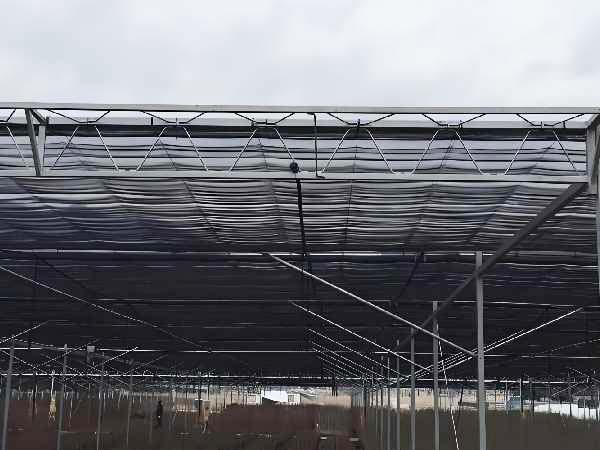
Galvanized steel frame shade net house
3. High Budget
Are you planning a long-term project, growing high-value crops, or starting large-scale commercial farming?
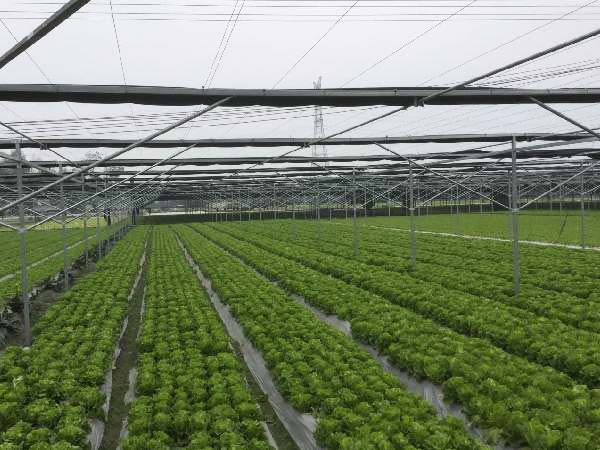
Flat-type shade net house with curtain system
Then it’s smart to invest once and build a stronger system. Go for dome-shaped, A-frame, or high tunnel structures with galvanized steel frames and HDPE nets. Add extras like smart control systems, drip irrigation, or mist cooling—just like in our advanced greenhouse setups. Yes, the upfront cost is higher. But with better durability, easier management, and higher crop quality and yield, you’ll actually recover your investment faster.
Final Thoughts
Choosing the right shade net house is really about giving your crops a solid, reliable “home”—one that blocks the harsh sun, stands up to wind, and fits your budget. Whether you are a small-scale grower with limited funds or managing a large farming project focused on high yield, understanding the various shade net structures is a crucial step toward achieving better results.
If you are currently searching for high-quality HDPE shade cloth for your farm, we would be happy to assist you. At INSONSHADE, we have focused on agricultural shade nets for years. We not only supply premium HDPE shade cloth, but we also provide custom greenhouse solutions tailored to your needs.
